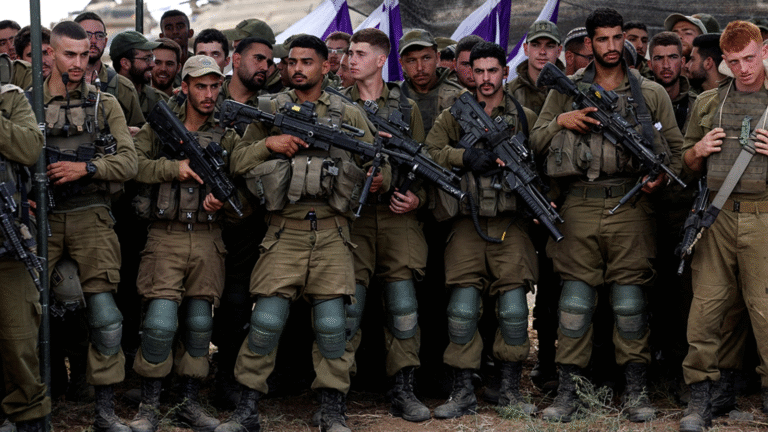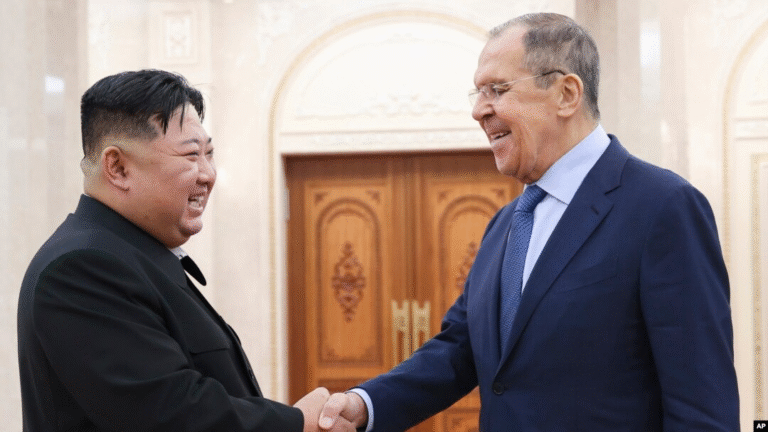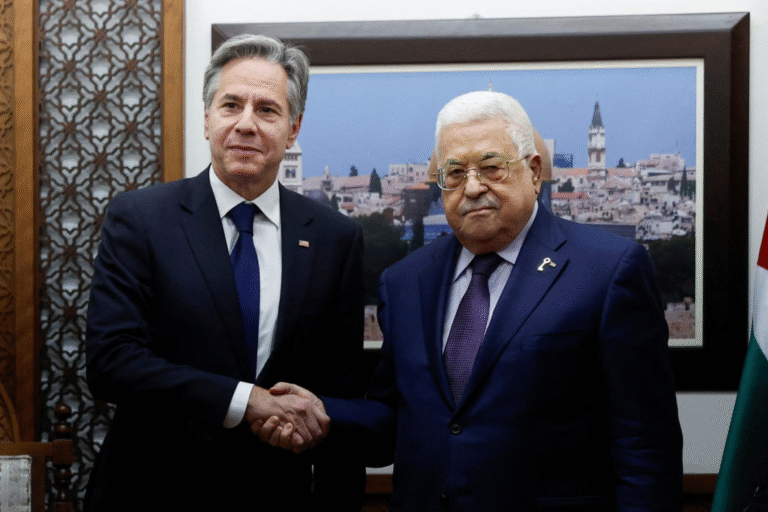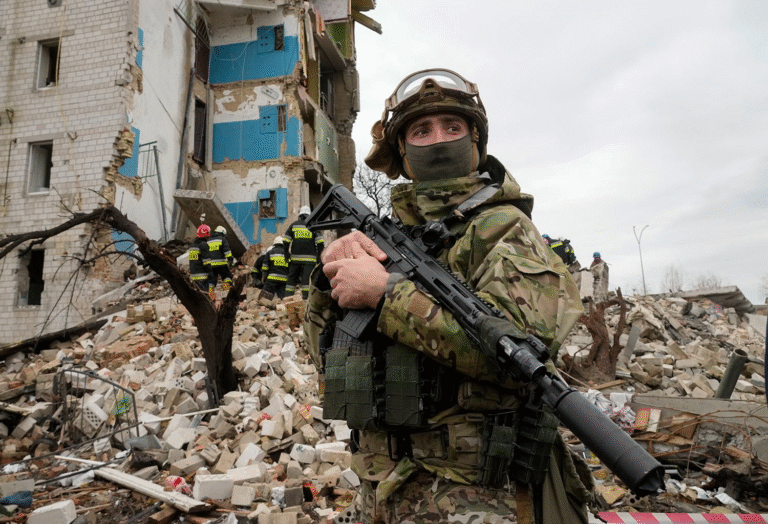
Protesting New York City to Oppose Putin’s regime’s genocide of
Ukrainian People Photo Credit: Jeenah Moon, Reuters
Isabella Iacona and Jennifer Jimenez
The America-Eurasia Center
The Civil Society Program
https://www.eurasiacenter.org/

The cultural legacy of Ukraine spans centuries. To stifle national identity and absorb Ukrainian
culture, the Russian Empire staged several types of Russification efforts in Ukraine throughout the
19th century.1 Despite these initiatives, the perseverance of the Ukrainian people led to the emergence
of intellectual and cultural forces that sought to preserve and revitalize the nation’s language and
traditions. Ukraine experienced chaotic changes in the 20th century, primarily influenced by the Soviet
Union and the profound shocks of the Russian Revolution. Ukraine attained independence in 1991, a
critical turning point in establishing its statehood.2 These pivotal moments, from Soviet domination to
the quest for independence, have permanently molded Ukraine into the dynamic country it is today.
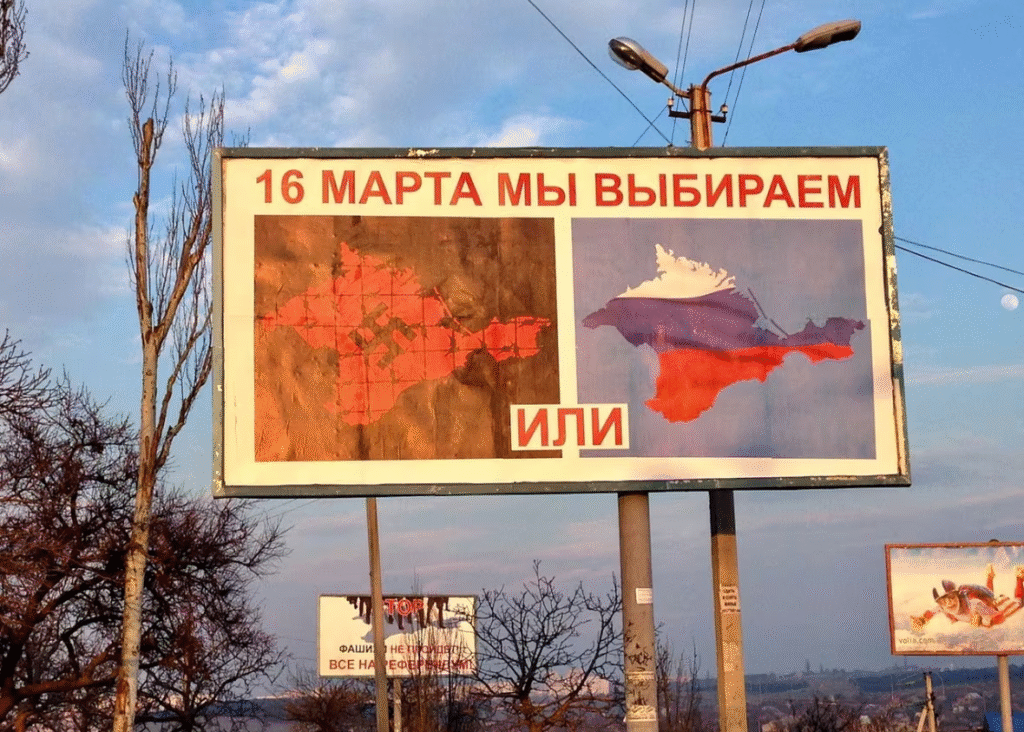
2014 Referendum Poster in Crimea Suggesting Need for Denazification of Ukraine
Photo Credit: Susan Orminston, CBC
After Ukraine gained independence from the Soviet Union, a complex interaction of historical,
political, and cultural forces gave rise to the war in eastern Ukraine. Deep-rooted differences existed
inside the country between the mostly Russian and Ukrainian speaking eastern and western regions,
resulting in a fractured national identity and divergent outlooks for the nation’s future.3
A glaring difference in expectations for Ukraine’s geopolitical direction was at the heart of the
war. Although the Kyiv administration was more interested in promoting deeper connections with the
European Union, some people in eastern Ukraine preferred closer ties with Russia.4 Further political
division in Ukraine emerged in the early 2010s, with pro-European elements facing off against those
allied with Russia. The Maidan, Revolution of Dignity, was a series of protest actions against the
Yanukovych government, sparked by his decision to forgo further integration with the European Union
in favor of fortifying ties with Russia.5 Demands for democratic changes, transparency, and a shift
toward more robust ties with Western countries increased as the movement gained momentum.
Moreover, tensions rose as a result of the Ukrainian government’s crackdown on protestors, which
heightened the commotion. The Maidan movement culminated in President Viktor Yanukovych’s
dramatic fall in 2014.6
An essential and divisive development in world geopolitics occurred in the months following
the Maidan when Russia annexed Crimea, setting off a chain of events that is still felt throughout
Eastern Europe. Widespread criticism followed Russia’s effort to take control of Crimea, an area that
had historically been a part of Ukraine. It was viewed as a blatant breach of Ukraine’s sovereignty and
territorial integrity.7
The takeover occurred during the discreet and well-planned deployment of Russian military
personnel across strategically significant areas of Crimea. There was no internationally recognized
military intervention protocol in place at the time of this deployment, which raised questions regarding
the legitimacy and legality of the takeover. In the middle of this military presence, Crimea held a
hurriedly planned referendum in which the majority of voters allegedly supported joining Russia.
However, there was much controversy regarding the referendum’s conditions; the vote was held in a
military occupation zone and without the participation of unbiased international observers. The
annexation was denounced by the international community as a breach of Ukraine’s sovereignty and a
violation of international law by the US and the EU, among others. They said that the annexation
lacked legal validity and went against accepted international conventions and that Russia’s actions
ignored basic principles of territorial integrity and self-determination.8
From Russia’s perspective, a variety of causes allegedly motivated the annexation. The belief
that the interests of ethnic Russians and Russian speakers in Crimea ought to be protected came first
among these. Russia said that the safety and cultural identity of the Russian-speaking people in
Ukraine were directly threatened by the political unrest and instability that had occurred there,
especially after President Viktor Yanukovych was overthrown.9 Russia’s rationale for the annexation
included essential elements of historical and geopolitical logic. Having been a part of the Russian
Empire until 1954, when it was moved to Ukraine during the Soviet era, Crimea has strong historical
links to Russia.10
Russia’s diplomatic relations with the West were severely strained as a result of the annexation,
and they were placed on hold. The Russian economy suffered significant harm due to the economic
sanctions and diplomatic isolation, which led to recessions and currency depreciation. The annexation
had severe economic consequences, including limited access to international financial markets, trade
restrictions, and decreased foreign investments. In addition, the conflict in eastern Ukraine was
sparked by the annexation of Crimea, which increased regional tensions, particularly between Russia
and Ukraine.11
However, the annexation has had far-reaching consequences as it sparked widespread fear
about the precedent set by Russia’s conduct and highlighted severe questions about international law
and the integrity of sovereign states.12 The annexation of Crimea raised disturbing concerns about what
might happen to other disputed areas throughout the globe and the possibility that other countries
would follow suit, undermining long-standing international relations and sovereignty standards.
Pro-Russian sentiment in eastern Ukraine increased after Russia took Crimea in 2014, which
escalated tensions to a breaking point. Protests broke out in the provinces of Donetsk and Luhansk,
with factions calling for independence or affiliation with Russia. These extreme manifestations of
separatism led to bloody skirmishes between pro-Russian separatist organizations and Ukrainian
government troops, engulfing the area in a deadly and lengthy war. Efforts to create stability in the
region since 2014 have been hampered by ongoing clashes despite several attempts at ceasefire
agreements and peace negotiations.13 With little success in reaching a long-term settlement, the
violence has continued despite attempts to mediate peace through ceasefires and talks. Amidst the
geopolitical upheaval, the fighting has severely affected the people of Ukraine. Millions of people have
lost their homes and are struggling to access basic amenities. Thousands of people have tragically died
as a result of the violence, deeply scarring Ukraine’s social fabric and posing long-term problems to the
stability and rebuilding of the nation.
Russian Actions in Ukraine

Map of Crimea. Image Credit: The Guardian
Annexation of Crimea
An essential and divisive development in world geopolitics occurred in 2014 when Russia
annexed Crimea, setting off a chain of events that is still felt throughout Eastern Europe. Widespread
worldwide criticism followed Russia’s effort to take control of Crimea, an area that had historically
been a part of Ukraine. It was viewed as a blatant breach of Ukraine’s sovereignty and territorial
integrity.14
The takeover occurred during the discreet and well-planned deployment of Russian military
personnel across strategically significant areas of Crimea. There was no internationally recognized
military intervention protocol in place at the time of this deployment, which raised questions regarding
the legitimacy and legality of the acts done. In the middle of this military presence, Crimea held a
hurriedly planned referendum in which the majority of voters allegedly supported joining Russia.
However, there was much controversy regarding the referendum’s conditions ; the vote was held in a
military occupation zone and without the participation of unbiased international observers, many
people across the world questioned the vote’s legality.15
Political Motivation
From Russia’s perspective, a variety of causes allegedly motivated the annexation. The belief
that the interests of ethnic Russians and Russian speakers in Crimea ought to be protected came first
among these. Russia said that the safety and cultural identity of the Russian-speaking people in
Ukraine were directly threatened by the political unrest and instability that had occurred there,
especially after President Viktor Yanukovych was overthrown.16 Russia’s rationale for the annexation
included essential elements of historical and geopolitical logic. Having been a part of the Russian
Empire until 1954, when it was moved to Ukraine during the Soviet era, Crimea has strong historical
links to Russia.17
On the other hand, the annexation was denounced by the international community as a breach
of Ukraine’s sovereignty and a violation of international law by the US and the EU, among others.
They said that the annexation lacked legal validity and went against accepted international conventions
and that Russia’s actions ignored basic principles of territorial integrity and self-determination.

Pro-Putin Protesters Holding Russian flags to Show Support of Russian Annexation of Crimea
in Moscow Russia. Photo Credit: Alexander Zemlianichenko, AP
International Response
Russia’s diplomatic relations with the West were severely strained as a result of the annexation,
and they were placed on hold. The Russian economy suffered significant harm due to the economic
sanctions and diplomatic isolation, which led to recessions and currency depreciation. The annexation
had severe economic consequences, including limited access to international financial markets, trade
restrictions, and decreased foreign investments. In addition, the conflict in eastern Ukraine was
sparked by the annexation of Crimea, which increased regional tensions, particularly between Russia
and Ukraine.18
However, the annexation has had far-reaching consequences as it sparked widespread fear
about the precedent set by Russia’s conduct and highlighted severe questions about international law
and the integrity of sovereign states.19 The annexation of Crimea raised disturbing concerns about what
might happen to other disputed areas throughout the globe and the possibility that other countries
would follow suit, undermining long-standing international relations and sovereignty standards.
The Causes of Conflict in Eastern Ukraine
After Ukraine gained independence from the Soviet Union, a complex interaction of historical,
political, and cultural forces gave rise to the war in eastern Ukraine. Deep-rooted differences existed
inside the country between the mostly Russian and Ukrainian speaking eastern and western regions,
resulting in a fractured national identity and divergent outlooks for the nation’s future.20
A glaring difference in expectations for Ukraine’s geopolitical direction was at the heart of the
war. Although the Kyiv administration was more interested in promoting deeper connections with the
European Union, some people in eastern Ukraine preferred closer ties with Russia.21 There have been
increasing protests and simmering tensions in Ukraine as a result of this ideological split over the
country’s future.
Pro-Russian sentiment in eastern Ukraine increased after Russia took Crimea in 2014, which
escalated tensions to a breaking point. Protests broke out in the provinces of Donetsk and Luhansk,
with factions calling for independence or affiliation with Russia. These extreme manifestations of
separatism led to bloody skirmishes between pro-Russian separatist organizations and Ukrainian
government troops, engulfing the area in a deadly and lengthy war.
With little success in reaching a long-term settlement, the violence has continued despite attempts to
mediate peace through ceasefires and talks. The repercussions have been disastrous, resulting in an
incredible death toll, mass human displacement, and massive damage to vital infrastructure.
Military Involvement
The eastern Ukrainian war is a complicated battleground where several entities are waging both direct
and indirect military actions, which exacerbate tensions and feed the cycle of violence and instability.
Fighting separatist organizations that have unilaterally proclaimed independence in the Donetsk and
Luhansk areas has become a major priority for the Ukrainian government.22 The Ukrainian military
vigorously fights these separatist groups with assistance from partners throughout the world. Allies
support Ukraine in suppressing the separatist rebellion by offering military instruction, equipment, and
intelligence assistance.
On the other hand, there are claims that Russia provides significant military support to the
separatist forces in eastern Ukraine, including arms, food, and even the deployment of Russian troops.
Russia fiercely disputes its engagement in the secessionist groups, calling them “volunteers” or
“militias” despite growing evidence that points to direct support. As a result, the global community has
viewed these denials with suspicion.23
Further complicating the battlefield is the entrance of proxy forces into the fighting in eastern
Ukraine. According to reports, fighters from several nations, including areas like Chechnya, are
actively fighting on both sides. These other parties provide another level of complexity, escalating the
dynamics of the dispute and maintaining the situation’s instability. The delicate nature of the situation
in eastern Ukraine emphasizes the continuous attempts to find a peaceful settlement through
diplomatic channels and international organizations. Despite diplomatic efforts, the conflict’s diverse
character and entrenched animosity make it challenging to find a durable settlement.
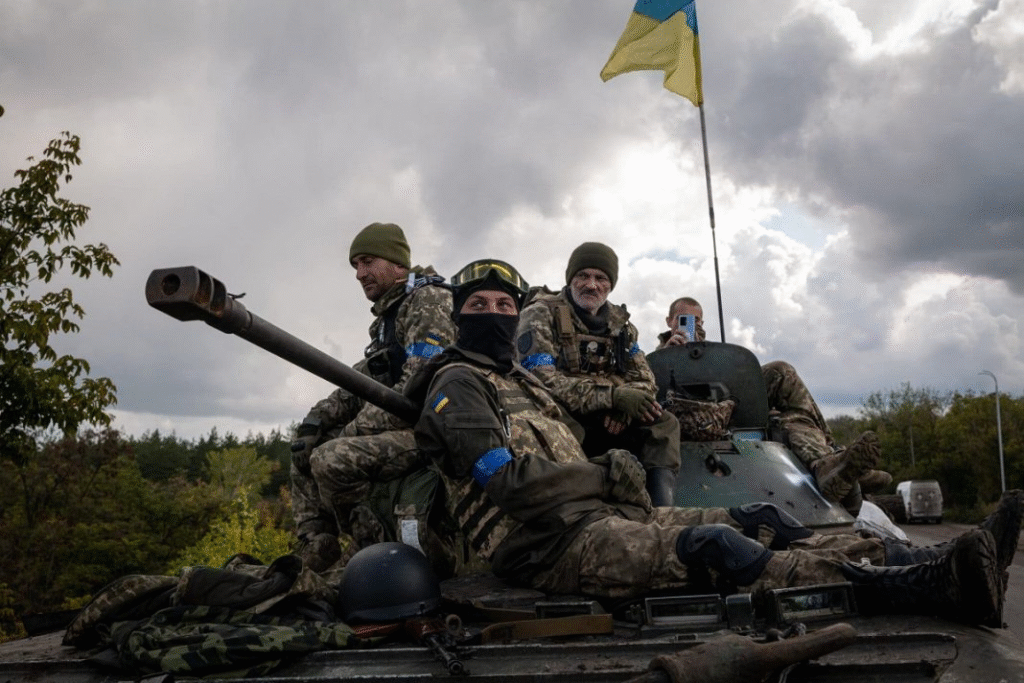
Ukrainian soldiers in Izium. Photo Credit: Nicole Tung, The New York Time
Assessment of Genocide
It is integral for this discussion to first establish what genocide truly is. What are its
classifications? And how can we trace these points to the acts of the Russian military? The act of
genocide is carried out in a procedural manner, oftentimes rooted in misinformation. These intentions
can be hidden behind propaganda. Labels like “de-sanitization” have been used on the state-level to
justify the brutalities against Ukrainian peoples.24 When acts of genocide are concealed behind
carefully crafted public statements, it creates a defense for the oppressor. Similarly, there has been the
weaponization of terms previously used in the context of genocide against Ukraine. The term “Nazi”
has been repurposed by Russian media, now describing a Ukrainian who denies any ties to Russia or
having any “affinity for Ukrainian culture or the European Union.”25 The recycling of vocabulary that
holds immense weight is a manipulation tactic, and when levied against a group on the international
level, can cause great damage. It was in September of 2022 that the Genocide Watch took note of
multiple stages of genocide in Ukraine, dehumanization being most prevalent here.
Genocide in Ukraine
Huge human suffering and loss were a part of the terrible history of the Ukrainian genocide. A
critically significant event in history, the genocide in Ukraine was characterized by severe brutality,
mass murder, and unimaginable misery for humankind.26 It is crucial to bring light on this troubling
time because doing so will enable us to better appreciate the complexity of the present and strive
toward a more peaceful future. International law defines “genocide” as the intentional and systematic
elimination of a national, ethnic, racial, or religious group, either whole or in part in a purposeful
manner which is illegal at times of war and peace.
Massacre in Bucha
One of the most alarming pieces of evidence to emerge from this conflict was the massacre in
Bucha which occurred in March of 2022. It was not long after the footage was released that Ukrainian
President Volodymyr Zelenskyy, along with United States President Joseph Biden, determined that
this was an act of genocide. Now, it has been previously established by the International Criminal
Tribunal for what previously was Yugoslavia, that context is imperative in determining genocidal
intent.27 Discussion of the overall context surrounding these atrocities, beginning with the Bucha
massacre is especially important. What first needs to be understood, is that these attacks were carried
out by one of the most elite military groups the Russian military has to offer. The perpetrators were
identified as the 234th Regiment, which is an elite airborne unit. This highly equipped class of
paratroopers was more than capable of completing their mission: clearing the way to the capital. With
that plan in mind, the Russian soldiers “interrogated and executed unarmed men of fighting age, and
killed people who unwittingly crossed their paths.” It was evident from the released footage that the
victims were outnumbered and outranked. Because of the targeted and procedural order of these
crimes, there is potential for these soldiers to be prosecuted by the International Criminal Court.
Evidence shows that most of the victims were either Ukrainian civilians or prisoners of war, opening
the possibility for a case of war crimes.28
Additional Acts of Genocide
However, this was not an isolated incident displaying calculated genocidal intent. We can draw
further conclusions from evidence of starvation and the forcible transfer of children. During the early
stages of the conflict, Ukrainian aid was obstructed, and food was inaccessible to the public. The
elimination of these channels to those residing in Ukrainian cities equates to a tactic of starvation. In
March of 2023, the International Criminal Court issued a warrant for Vladimir Putin’s arrest on
account of the hundreds of thousands of Ukrainian children who were forcibly transferred to Russia
and integrated into Russian homes. Citing from the Russian Ministry of Defense, there have been over
307,000 children transferred to Russia ranging from February to June of 2022. During these transfers,
many families were separated from each other as well as the confiscation of all cell phones.
Actions Brought to Court
In March of 2022, the ICC held a case in a Hague based court on the basis of the 1948
Genocide Convention to hear the Russian-Ukrainian matters. Combatting the accusations of a
genocide against Russia, Ukrainian representatives presented numerical data which shows a drastic
decline in civilian casualties since 2014. These statistics indicate absolutely no evidence of the
targeting of Russian civilians. Furthermore, United Nations human rights monitors have been carefully
tracking the conflict in Luhansk and Donetsk and have found no trace of genocidal intent. With
acknowledgment to the jurisdiction of the ICC, the office of the prosecutor has recorded crimes, but in
their seven years of investigations have yet to find any evidence of genocide on behalf of Ukraine.29
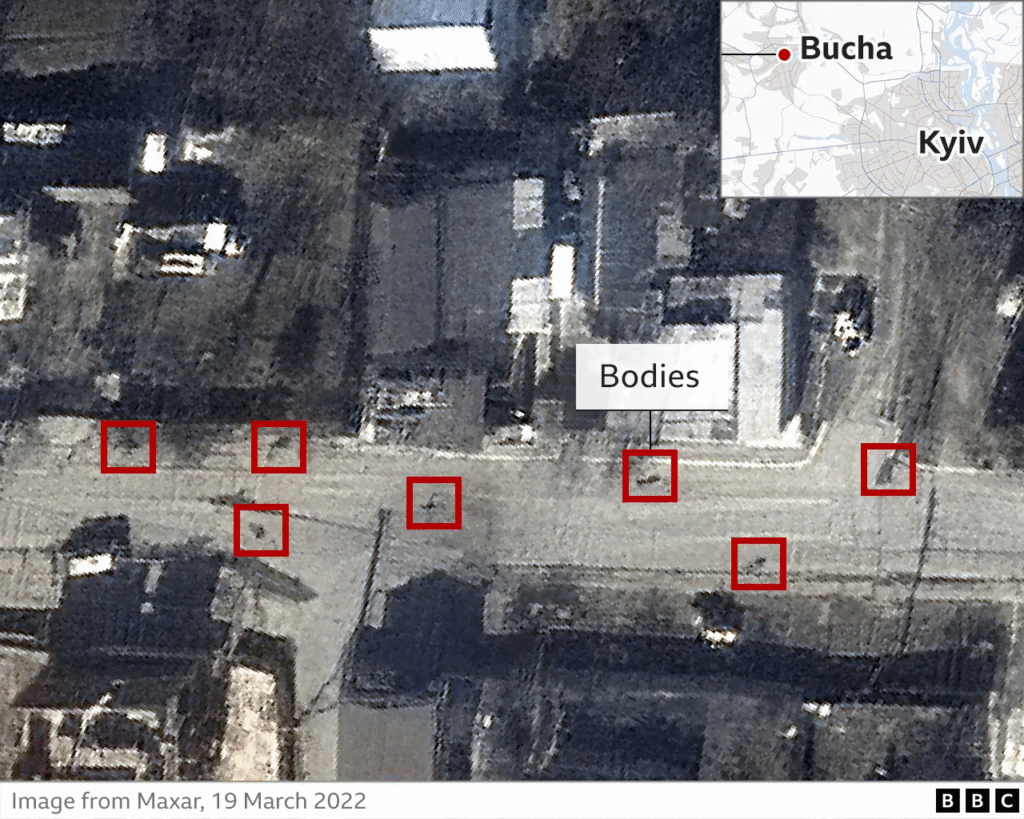
Satellite Images – The location of Ukrainian victims of Putin’s genocide in Bucha, Photo Credit: Maxar, BBC
- Kappeler, A. (2014). Ukraine and Russia: Legacies of the Imperial past and Competing Memories.
Journal of Eurasian Studies, 5(2), 107-115. https://doi.org/10.1016/j.euras.2014.05.005 ↩︎ - Hrushevs’ kyi, Mykhailo, and Uliana M. Pasicznyk. History of Ukraine-Rus’. Vol. 1. Edmonton:
Canadian Institute of Ukrainian Studies Press, 1997. ↩︎ - Aliyev, Huseyn. “The logic of ethnic responsibility and progovernment mobilization in East Ukraine
conflict.” Comparative Political Studies 52.8 (2019): 1200-1231. ↩︎ - Aliyev, Huseyn. “The logic of ethnic responsibility and progovernment mobilization in East Ukraine
conflict.” Comparative Political Studies 52.8 (2019): 1200-1231. ↩︎ - Kappeler, A. (2014). Ukraine and Russia: Legacies of the Imperial past and Competing Memories.
Journal of Eurasian Studies, 5(2), 107-115. https://doi.org/10.1016/j.euras.2014.05.005 ↩︎ - Ambrosio, Thomas. “The fall of Yanukovych: Structural and Political Constraints to Implementing
Authoritarian Learning.” East European Politics 33.2 (2017): 184-209. ↩︎ - Allison, Roy. “Russian ‘deniable’ intervention in Ukraine: how and why Russia broke the rules.”
International affairs 90.6 (2014): 1255-1297. ↩︎ - Hrushevs’ kyi, Mykhailo, and Uliana M. Pasicznyk. History of Ukraine-Rus’. Vol. 1. Edmonton:
Canadian Institute of Ukrainian Studies Press, 1997. ↩︎ - Allison, Roy. “Russian ‘deniable’ intervention in Ukraine: how and why Russia broke the rules.”
International affairs 90.6 (2014): 1255-1297. ↩︎ - Hrushevs’ kyi, Mykhailo, and Uliana M. Pasicznyk. History of Ukraine-Rus’. Vol. 1. Edmonton:
Canadian Institute of Ukrainian Studies Press, 1997. ↩︎ - ROY ALLISON, Russian ‘deniable’ intervention in Ukraine: how and why Russia broke the rules,
International Affairs, Volume 90, Issue 6, November 2014, Pages 1255–1297,
https://doi.org/10.1111/1468-2346.12170 ↩︎ - Saluschev, Sergey. “Annexation of Crimea: Causes, Analysis and Global Implications.” Global
Societies Journal 2 (2014). ↩︎ - DANCIU, Gabriela-Cătălina. “A PERSPECTIVE ON JUSTIFYING THE UKRAINE–RUSSIA
WAR. ELEMENTS OF PROPAGANDA.” International Journal of Social and Educational
Innovation (IJSEIro) (2023): 224-239. ↩︎ - Allison, Roy. “Russian ‘deniable’ intervention in Ukraine: How and Why Russia Broke the Rules.”
International affairs 90.6 (2014): 1255-1297. ↩︎ - Hrushevs’ kyi, Mykhailo, and Uliana M. Pasicznyk. History of Ukraine-Rus’. Vol. 1. Edmonton:
Canadian Institute of Ukrainian Studies Press, 1997. ↩︎ - Allison, Roy. “Russian ‘deniable’ Intervention in Ukraine: How and Why Russia Broke the Rules.”
International affairs 90.6 (2014): 1255-1297. ↩︎ - Hrushevs’ kyi, Mykhailo, and Uliana M. Pasicznyk. History of Ukraine-Rus’. Vol. 1. Edmonton:
Canadian Institute of Ukrainian Studies Press, 1997. ↩︎ - ROY ALLISON, Russian ‘deniable’ intervention in Ukraine: how and why Russia broke the rules,
International Affairs, Volume 90, Issue 6, November 2014, Pages 1255–1297,
https://doi.org/10.1111/1468-2346.12170 ↩︎ - Saluschev, Sergey. “Annexation of Crimea: Causes, analysis and global implications.” Global
Societies Journal 2 (2014). ↩︎ - Aliyev, Huseyn. “The Logic of Ethnic Responsibility and Progovernment Mobilization in East
Ukraine Conflict.” Comparative Political Studies 52.8 (2019): 1200-1231 ↩︎ - Aliyev, Huseyn. “The Logic of Ethnic Responsibility and Progovernment Mobilization in East
Ukraine Conflict.” Comparative Political Studies 52.8 (2019): 1200-1231 ↩︎ - Hrushevs’kyi, Mykhailo, and Uliana M. Pasicznyk. History of Ukraine-Rus’. Vol. 1. Edmonton:
Canadian Institute of Ukrainian Studies Press, 1997. ↩︎ - Aliyev, Huseyn. “The logic of ethnic responsibility and progovernment mobilization in East Ukraine
conflict.” Comparative Political Studies 52.8 (2019): 1200-1231. ↩︎ - Dickinson, Peter. “New Report Highlights Evidence of Escalating Russian Genocide in Ukraine.”
Atlantic Council, 10 Aug. 2023, www.atlanticcouncil.org/blogs/ukrainealert/new-report-highlights-evidence-ofescalating-russian-genocide-in-ukraine/. ↩︎ - Allegations of Genocide of Ukrainians in the Russian Invasion of Ukraine,
en.wikipedia.org/wiki/Allegations_of_genocide_of_Ukrainians_in_the_Russian_invasion_of_Ukraine.
Accessed 6 Dec. 2023. ↩︎ - Denys Azarov, Dmytro Koval, Gaiane Nuridzhanian, Volodymyr Venher, Understanding Russia’s Actions in
Ukraine as the Crime of Genocide, Journal of International Criminal Justice, Volume 21, Issue 2, May 2023, Pages
233–264, https://doi.org/10.1093/jicj/mqad018 ↩︎ - Dickinson, Peter. “New Report Highlights Evidence of Escalating Russian Genocide in Ukraine.” Atlantic
Council, 10 Aug. 2023, www.atlanticcouncil.org/blogs/ukrainealert/new-report-highlights-evidence-ofescalating-russian-genocide-in-ukraine/. ↩︎ - Al-hlou, Yousur, et al. “Caught on Camera, Traced by Phone: The Russian Military Unit That Killed
Dozens in Bucha.” The New York Times, The New York Times, 22 Dec. 2022,
www.nytimes.com/2022/12/22/video/russia-ukraine-bucha-massacre-takeaways.html. ↩︎ - “International Criminal Court at The Hague Hears Russian-Ukraine Matter.” YouTube, SABC News , 7
Mar. 2022, https://www.youtube.com/watch?v=UWaXocTQU4k. Accessed 6 Dec. 2023. ↩︎
